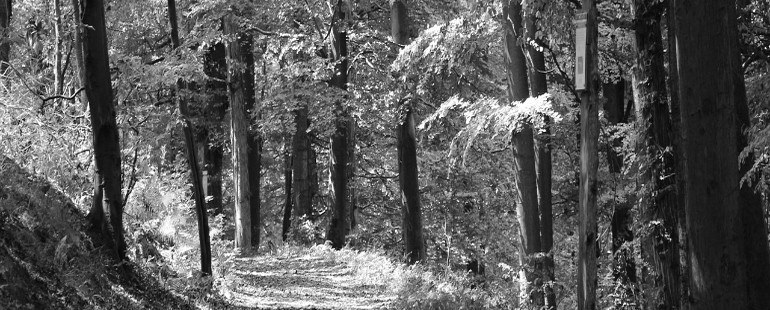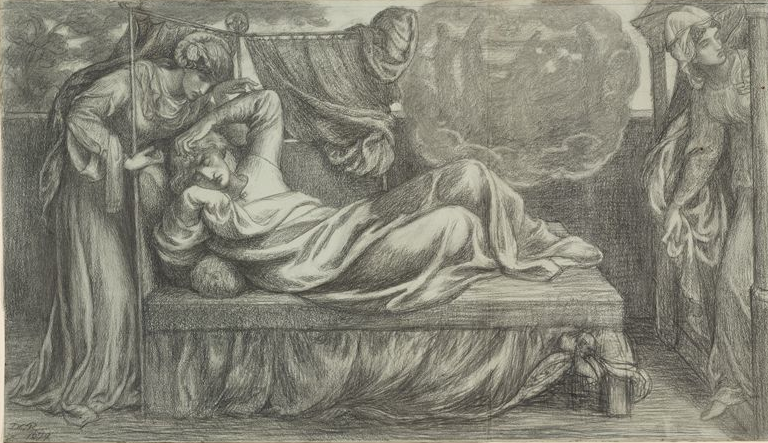So Much Depends Upon: America’s Most Misread Poems

Confessing that you teach or write or love poetry can be a lot like confessing that you grew up in some tiny far-flung foreign country. Most people don’t know much about what goes on there, and they’re suspicious of anyone who does. Over the years, I’ve distilled people’s reactions down to a core set of misconceptions, commonly held even by widely read, open-minded people. Some of the most pervasive: Poetry is overly difficult. It’s obtuse on purpose. It’s like a riddle. A secret code. You need to read between the lines. It can mean anything you want it to. And it’s better when it rhymes.
Where do these myths come from? Children love poetry, even “difficult” pieces like “The Jabberwock.” So when do readers’ attitudes shift toward suspicion and frustration? Does it have anything to do with the fact that two of the most famous and frequently taught poems in the American canon play perfectly into these myths?
Take “The Road Not Taken” by Robert Frost. It’s a beautifully constructed piece that’s like comfort food to many of my students—familiar and uplifting. They’re drawn to it when we begin discussing poetry, which is otherwise very foreign to them. Here’s the problem: “The Road Not Taken” might be one of the most enigmatic poems ever written.
The meaning that most students take from the poem is that it’s about taking a nontraditional path, being an individual, and making “all the difference” in one’s life by doing things one’s own way. But as David Orr argued in his 2015 book The Road Not Taken: Finding America in the Poem Everyone Loves and Almost Everyone Gets Wrong, the poem isn’t really about that at all.
According to Orr, Frost originally wrote the poem to tease his friend and walking companion Edward Thomas, who apparently had a habit of regretting whichever walking path the two chose as they ambled through the country. In 1915, Frost sent a draft to Thomas without comment, expecting him to get the joke—instead Thomas (“one of the keenest literary thinkers of his time,” according to Orr) found the poem revelatory. Frost sent back his reply: “Methinks thou strikest too hard in so small a matter.”
The problem is that broad ideas of the poem’s motivational meaning don’t work when you look closely. Throughout his book, Orr shows how the poem invites and then thwarts possible interpretations, “some more plausible than others, but none of which can be discarded.” This seemed true even of Frost himself. Take the poem’s last stanza:
I shall be telling this with a sigh
Somewhere ages and ages hence:
Two roads diverged in a wood, and I—
I took the one less traveled by,
And that has made all the difference.
What’s with that famous sigh? In his letter to his walking buddy, Frost calls it “hypothetical” and “a mock sigh.” By 1965, he was describing the sigh to audiences as “absolutely saving.” Which was it? Mock or life-changing? Could it be both? Had Frost changed his mind about the poem’s meaning, or was his intention less important than the poem’s (likely misread) public reception?
I don’t mean to suggest that if Frost didn’t even know what his poem meant it isn’t worth it for us to try to figure it out, either. But it does reinforce another one of those pervasive poetry myths: that poems can mean absolutely anything readers want them to.
When it comes to “The Red Wheelbarrow” by William Carlos Williams, most readers have the opposite problem. Whereas Frost frustrates because a message we think we understand well disappears upon scrutiny, “The Red Wheelbarrow” locks most of us out from the very beginning.
As with Frost, though, context matters here. I was earning my doctorate when I first learned that “The Red Wheelbarrow” was actually an excerpt. Not only was the poem from a book-length manifesto, Spring and All, that Williams wrote in 1923, but it is also structured as the last section of a longer poem. It’s astonishing that, for nearly a century, we’ve surgically removed these few lines and expected readers to make sense of them.
It’s very difficult to boil down Spring and All to a few easy soundbites. The book shows an acrobatic mind trying on ideas, trying to discover in the process what poetry is and is not, what the role of the imagination should be in art, and, especially, how to capture different kinds of modern people through poetry. For Williams, poetry should be about creating new forms to capture the “rhythm” of humanity: “the cresence and ebb of this force, shifting from class to class and location to location.” The poem that follows does exactly that, skipping from teenage boys to young lovers, and finally to that famous red wheelbarrow. Situated as a culmination, these lines clearly exemplify for Williams the new forms and rhythms needed to create “imaginative reality.” The “so much” that depends upon that red wheelbarrow is enormous for Williams: it’s poetry itself, labor, class, human endeavor, past and present life. But this is impossible to understand without the context of Spring and All—and frankly, it’s not so easy with the context, either.
The fact is that both “The Red Wheelbarrow” and “The Road Not Taken” are some of the first examples of serious poetry readers usually encounter, in high school English, or even earlier. And if these poems strike a chord and open a reader up to more experiences with literature, then that’s all that really matters. But I suspect that, instead, these slippery poems may be the very ones helping to solidify myths that poetry evangelists like me have become all too familiar with.


